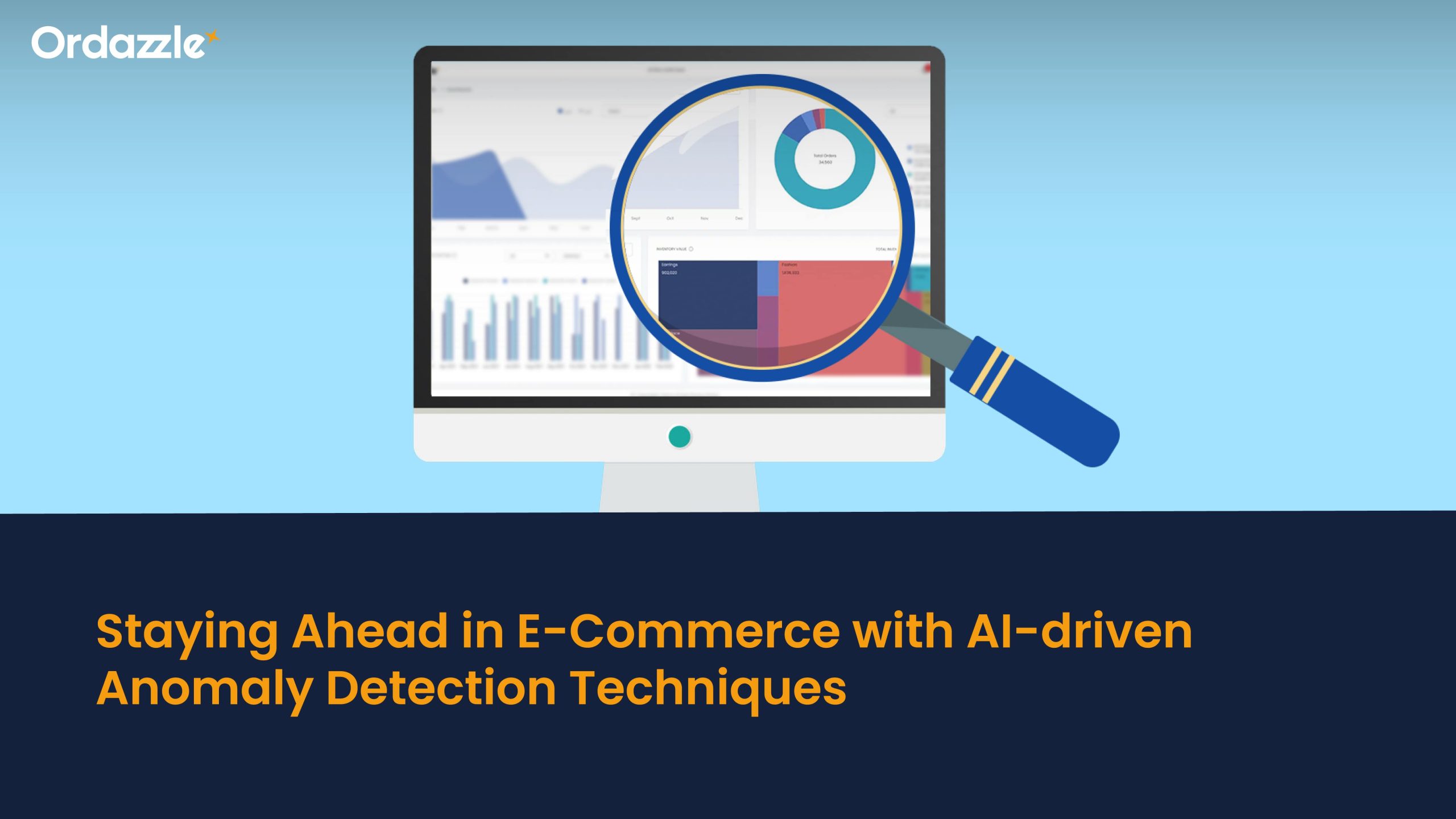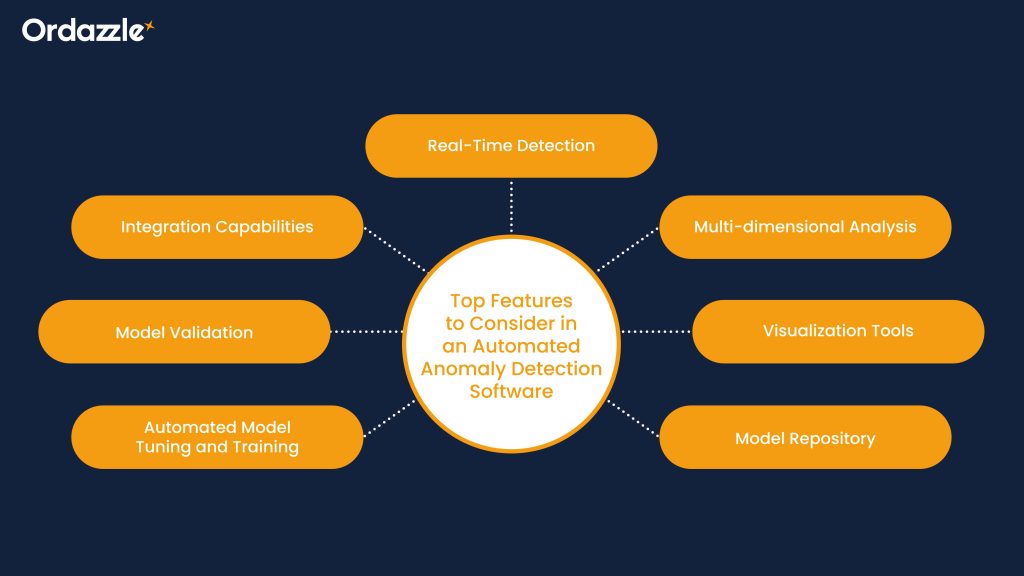
Staying Ahead in E-Commerce with AI-driven Anomaly Detection Techniques
Picture this: You’re inspecting through your bustling digital marketplace, virtual aisles filled with an array of products, digital carts brimming, and the click-clack of online checkouts echoing. All seems as it should until a sly glitch tags a luxury handbag priced lower than your morning coffee! While it sounds like a shopper’s dream, for an e-commerce company, it’s a nightmare.
In the vast expanse of e-commerce, where every nuance — from inventory management to frictionless checkouts — depends on uninterrupted data flows, even the slightest anomalies can wreak havoc.
So, who, or rather what, ensures these glitches remain mere hiccups rather than crippling setbacks? The answer lies in the silent, vigilant watch of AI-driven Anomaly Detection.
Dive with us into the depths of this technological wonder as we uncover how it’s benefiting the e-commerce landscape.
What is Anomaly Detection?
Detecting anomalies is a critical statistical technique that scrutinizes company data to identify deviations from established norms. Such outliers often signify unforeseen incidents like equipment malfunctions, evolving consumer preferences, or other atypical events. By promptly recognizing these anomalies, businesses can intervene and prevent potential damage.
While effective in certain contexts, traditional statistical methods often falter when faced with multi-dimensional and vast datasets. This is where the prowess of machine learning comes into play. AI-driven anomaly detection harnesses powerful algorithms to seamlessly sift through extensive transactional data, spotting real-time irregularities and anomalies.
The adoption of AI-centric detection techniques is revolutionizing the retail and e-commerce landscapes. Not only does it offer an avenue for businesses to streamline their operations, but it also paves the way for a more enriched customer experience and catalyzes revenue growth.
Why AI-powered Detection Software Matters in E-commerce?
In the era of big data, the ability to quickly and accurately analyze vast amounts of information is crucial. The AI-driven detection solution is powerful, enabling businesses to gain valuable insights, enhance operations, and drive growth.
- Boosting Customer Experience: By identifying unusual patterns in customer behavior, businesses can delve deep into the nuances of customer desires and expectations. This empowers them to craft offerings with pinpoint precision, cultivating deeper customer satisfaction and fostering loyalty.
- Streamlining Inventory with Product Management Software: Products going out of stock unexpectedly or not being listed due to system errors can lead to missed sales opportunities. Integrating automated detection software with product management software can preempt these scenarios.
- Optimizing operations: This detection prowess enables businesses to identify and rectify operational discrepancies in real time, ensuring streamlined processes and peak operational performance.
- Enhanced fraud detection: The AI-driven detection solution can identify fraud or suspicious activity in real-time, enabling businesses to respond swiftly and mitigate potential damage. This not only protects the business but also enhances customer trust and confidence.
- Financial Accuracy: The automated detecting software safeguards against pricing glitches or erroneous discount applications, protecting the company’s revenues and reputation.
- Optimizing Deliveries with Logistics Management Software: In the logistics realm, anomalies could take the form of unforeseen route changes or unwarranted delays. Integrating automated detection with logistics management software can flag and address these deviations in real-time.
Top Features to Consider in an Automated Anomaly Detection Software

Real-Time Detection
Real-time detection is essential for AI-driven monitoring systems. It continuously scans data streams, alerting users to abnormal patterns instantly. Leveraging AI and machine learning, it constantly refines its detection accuracy. This tool is invaluable for risk management, fraud prevention, and security.
Multi-dimensional Analysis
E-commerce platforms collect diverse data types (sales, traffic, click-through rates, etc.). An effective anomaly detection system should be able to analyze and detect anomalies across multiple dimensions simultaneously. Such a robust system can lead to more insightful decisions and timely interventions.
Visualization Tools
Leveraging advanced visualization tools enables swift abnormality detection in e-commerce platforms. Retailers can efficiently spot and address discrepancies by comparing real-time data with archived images through a user-friendly interface. This ensures a seamless shopping experience and promotes business integrity.
Model Repository
In e-commerce, a model repository is pivotal for managing AI-driven detection techniques. It allows businesses to securely store data and track changes to their custom models, adapting to the evolving online retail landscape. By harnessing a well-structured model repository, e-commerce giants can enhance their detection prowess and optimize their operations, product recommendations, customer experience, and fraud prevention.
Automated Model Tuning and Training
Automated model tuning and training enhance AI-driven detection capabilities for e-commerce platforms, including product and logistics management software, enabling swift adaptation to evolving consumer trends. This reduces manual intervention, swiftly resolves discrepancies, and improves the shopping experience, ensuring e-commerce platforms stay agile and customer-centric.
Model Validation
Model Validation is paramount for the e-commerce domain. By employing robust validation methods like cross-validation and holdout validation, e-commerce platforms can critically assess and optimize their models in alignment with dynamic shopping patterns. This cyclic refinement fosters a continually improving detection system, fine-tuning its precision. For e-commerce enterprises, dependable model validation is essential to discern and address discrepancies, ensuring a seamless shopping experience and heightened customer trust.
Integration Capabilities
Integration capabilities are pivotal for a comprehensive and timely view of business operations. Such capabilities allow the software to connect seamlessly with various e-commerce platforms. Effective integrations will enhance your detection prowess and foster swift responses, ensuring business efficiency and customer trust.
Conclusion
With the surge in data-driven decision-making, AI-powered anomaly detection has transitioned from a mere add-on to a cornerstone for e-commerce business success. By embracing this technology, e-commerce platforms can guarantee a glitch-free user experience, bolster trust, and gain a competitive edge.
The leading e-commerce solutions company, Ordazzle, is primed with sophisticated AI-driven anomaly detection for businesses. Our AI-driven tools are designed to detect, prevent, and manage any potential anomalies, ensuring a seamless shopping journey and e-commerce operations.
Connect with our experts today to elevate your e-commerce operations to unparalleled heights.


